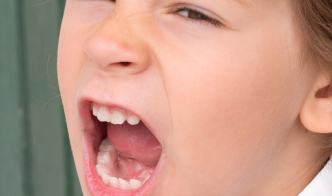
Q&A Young student who bites and hits
May 27, 2016
Q:
‘I have been referred a child who bites and hits others when she cannot have her own way. The child is in Prep (Foundation year), and did the same at preschool and at home. This year’s classroom teacher has had some success, however the behaviour has returned.
From my reading, this behaviour may relate to anxiety, with the child unable to manage her feelings, or control her behaviour as a result. She may also be unable to express her feelings so she lashes out physically.
I am due to meet with the child and her parent tomorrow. Do you have any specific strategies that I may suggest to help? Or any literature I can give to the parent? I have some positive strategies to offer and a plan in mind, but I thought I’d seek assistance here as well.’
Tamara, School Counsellor
A:

Biting and hitting others when a child does not get their own way is a very common behaviour in toddlers, and for a small number of children it can persist into Foundation Year or even Year 1. Without knowing all the details, I can only comment fairly generally.
With the parents, and the child:
- Clearly explain to the child that biting or hitting people is not okay. Explain how we only bite apples and food, not people. The same with hitting, we hit a ball with a bat, but we don’t hit people.
- Assist them to agree upon consequences for biting or hitting others at home.
- Talk about ‘using words’, that is, developing expressive language skills. These behaviours can be a sign of frustration or another emotion. Talk with the child about the need to ask for what they want, rather than biting or hitting. Parents can practice this skill with their child. They might need to provide examples of specific phrases the child can use such as, ‘I’m feeling upset.’ ‘I don’t understand.’ ‘Can you show me again?’ ‘Can I play too?’ ‘It’s my turn.’ etc.
- Provide resources. Websites such as Raising Children have tip sheets parents can refer to, that suggest strategies to help reduce biting and hitting behaviours.
With the teacher, and the parents:
- Implement a Behaviour Support Plan (BSP). You note there has been some success with reducing the child’s biting and hitting behaviours but it has not been maintained. Creating a BSP allows you to examine why the behaviour is occurring, as well as the most appropriate response. Creating and sharing a written BSP means:
- everyone (including teachers, parents, the child, leadership team, and other school professionals) is on the same page.
- all school staff can respond consistently.
It can be helpful to sit with the parents and the teacher to try to work out why the child bites. Prompting questions are included in the BSP document above, but some useful discussion questions might include:Who does the child bite?
-
- When do they bite? (Time of the day, specific classes, or teachers? Is there a pattern?)
- What happens immediately before they bite?
- What happens immediately afterwards? (i.e. How do people react?)
- What has helped to reduce this behaviour in the past?
- What learning or social skills is the child lacking that could help to resolve this issue. Ross Greene’s survey, Assessment of lagging skills and unsolved problems, may be a helpful prompt.
- What will the consequence be at school for the behaviours? Will this consequence work to reduce the behaviour? If no – adapt.
Setting a date to review the progress of the BSP at the meeting helps to ensure the plan is working, that everyone is implementing it consistently, and that any required changes can be implemented before the hitting or biting behaviour escalates.
For step-by-step instructions on writing an effective behaviour support plan see the guide created by Psych4Schools for the Department of Education and Training Victoria.
For practical ways to work individually with a child to help them regulate their emotions and behaviour, see forthcoming blog on this topic.
Zoe Ganim and Murray Evely, Psych4Schools Psychologists